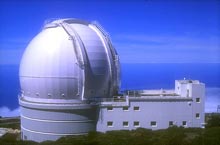
Researchers at the Universities of Warwick and Keele are being supported by the Economic and Social Research Council to watch the popular game show Who Wants to be a Millionaire? The globally broadcast show is a treasure trove of data on how all sorts of people of different ages and genders and nationalities perceive and act on risk.
One of the researchers, economist Professor Ian Walker from the University of Warwick said:
“Many decisions involve weighing up potential gains and losses w

Wound healing appears generally a banal event, but in a certain proportion of cases it evolves inappropriately in hypertrophic scars resulting in skin and organ deformations. This is due to an excess of wound contraction, a phenomenon that generally helps to close the wound. Hypertrophic scarring is observed frequently in burned patients.
For the past 30 years, Professor Giulio Gabbiani and his team are interested in the role of myofibroblasts in wound contraction. Myofibroblasts, specializ

Of the estimated 10,000 to 100,000 microbial species that inhabit our planet, scientists can only coax a few thousand to grow in the laboratory. As a result, efforts to categorize the vast diversity of microbes are lagging far behind attempts to classify plants, animals and insects. Now a report published in the current issue of the journal Science suggests that some of these so-called uncultivable microorganisms might not be so out of reach after all.
Tammi Kaeberlein, Kim Lewis and Klava

A research team jointly involving the IRD, the CEA and the CNRS has very recently found phytochromes in a strain of nitrogen-fixing bacterium, Bradyrhizobium (1), symbiont on certain tropical leguminous plants (the Aeschynomene). Techniques of molecular biology, biophysics and biochemistry revealed that the newly-discovered phytochrome has an essential role as regulator of the bacterium’s photosystem synthesis. An identical function was shown in the photosynthetic bacterium Rhodopseudomonas palustris

A model of a system for growing plants to plan biological experiments in space has just left the company of ROVSING, in Ballerup near Copenhagen, on its way to ESA’s European Space Research and Technology Centre (ESTEC) in the Netherlands.
The full name of this experiment reference model is European Modular Cultivation System Experiment Reference Model (EMCS ERM). This will be used at ESTEC to plan and carry out experiments for growing plants in space. Then in 2003 the EMCS Flight Model will

A team of UK astronomers announced this month the discovery of cannibalistic stars that explain one of the mysteries surrounding the Big Bang. The stars are almost as old as the Universe and they reveal what space was like in the very beginning.
The team from the Open University found that a group of 14-billion-year-old stars were all in a spin (literally) because of a nasty phase earlier in their lives. They were, in short, cannibalistic stars. The scientists` discovery not only explains

For a wide variety of emerging quantum technologies, such as secure quantum communications and quantum computing, quantum entanglement is a prerequisite. Scientists at the Max-Planck-Institute for the Science of Light…

NASA’s Nancy Grace Roman Space Telescope is one giant step closer to unlocking the mysteries of the universe. The mission has now received its final major delivery: the Optical Telescope…

An international team that includes the University of Bath has discovered three ultra-massive galaxies (‘Red Monsters’) in the early Universe forming at unexpected speeds, challenging current models of galaxy formation….

Although it is the smallest and lightest atom, hydrogen can have a big impact by infiltrating other materials and affecting their properties, such as superconductivity and metal-insulator-transitions. Now, researchers from…

Known for its axon guidance properties, new research suggests protein is critical in guiding neural development. Scientists at the Eli and Edythe Broad Center of Regenerative Medicine and Stem Cell Research…

AI tool reads biopsy images… To determine the type and severity of a cancer, pathologists typically analyze thin slices of a tumor biopsy under a microscope. But to figure out…

Most people think of coffee cups, bathroom tiles or flower pots when they hear the word “ceramic”. Not so Frank Clemens. For the research group leader in Empa’s Laboratory for…

New ISTA assistant professor Julian Léonard makes abstract quantum properties visible. From the realm of the abstract to the tangible, the new assistant professor at the Institute of Science and…

Engineers in Australia have found a way to make stronger and crack-resistant concrete with scrap carpet fibres, rolling out the red carpet for sustainability in the construction sector. The research…

…quieting all sounds more than a few feet away. Imagine this: You’re at an office job, wearing noise-canceling headphones to dampen the ambient chatter. A co-worker arrives at your desk…

Carnegie Mellon University’s EgoTouch creates simple interfaces for virtual and augmented reality. The new generation of augmented and virtual reality controllers may not just fit in the palm of your…

Physicists create “light hurricanes” that could transport huge amounts of data. Much of modern life depends on the coding of information onto means of delivering it. A common method is…